Einser Hall of Fame
G-K
Since the founding of the Will Eisner Comic Industry Awards (and their previous incarnation, the Kirby Awards), the following individuals have been inducted into the Hall of Fame.

Neil Gaiman
1960–
Highly successful author Neil Gaiman broke into comics in 1986 with some short “Future Shock” strips for 2000 AD. But he really attracted notice with his and Dave McKean’s graphic novel Violent Cases, published in 1987. DC brought him on to write the limited comics series Black Orchid, which was followed in 1989 by the groundbreaking series The Sandman for DC’s Vertigo line; the series lasted 75 issues, through 1996, and had several spinoffs and one-shots. Gaiman’s other comics work has included the series Death, Marvel 1602, and Miracleman, as well as the graphic novels Signal to Noise, Mr. Punch, and How to Talk to Girls at Parties.
Inducted 2021
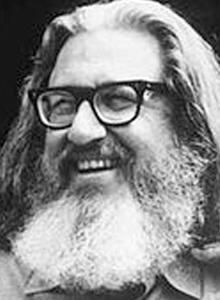
William Gaines
1922–1992
Although most people probably think of MAD magazine when they think of Gaines (he was the publisher of the humor magazine from its inception until his death), William Gaines had his greatest influence in founding and publishing the EC Comics line, from Tales From the Crypt to Weird Science.
Inducted 1993
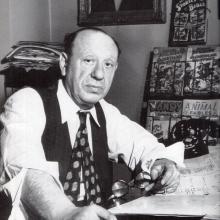
Max Gaines
1894–1947
In 1933, Max Gaines devised the first four-color, saddle-stitched newsprint pamphlet, a precursor to the color-comics format that became the standard for the American comic book industry. He was co-publisher (with Jack Liebowitz) of All-American Publications, a seminal comic book company that introduced such enduring fictional characters as Green Lantern, Wonder Woman, and Hawkman. He went on to found Educational Comics, producing the series Picture Stories from the Bible. He authored one of the earliest essays on comic books, a 1942 pamphlet titled Narrative Illustration: The Story of the Comics. After Gaines’ death (in a motorboating accident) in 1947, Educational Comics was taken over by his son Bill Gaines, who transformed the company (now known as EC Comics) into a pioneer of horror, science fiction, and satirical comics.
Inducted 2022

Jose Luis Garcia-Lopez
1948–
Jose Luis Garcia-Lopez was born in Spain and began drawing comics professionally in Argentina at age 13. In the 1960s, he drew romance titles for Charlton Comics. He came to the U.S. in 1974 and started working for DC Comics, drawing series such as Superman, Batman, Hawkman, Tarzan, and Jonah Hex. His other notable work includes Atari Force, Deadman, New Teen Titans, and On the Road to Perdition. Since 1982, Garcia-Lopez has designed and pencilled the definitive versions of Superman, Batman, Wonder Woman, and many other characters for various DC Comics style guides, which are created for licensees only. His style guide art has been seen on countless DC Comics licensed products and is still being used today.
Inducted 2019
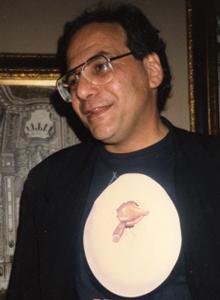
Steve Gerber
1947–2008
Writer Steve Gerber, best known for co-creating Howard the Duck, wrote such titles as The Defenders, Man-Thing, Omega the Unknown, and Guardians of the Galaxy for Marvel and was one of the founders of the Malibu Comics Ultraverse.
Inducted 2010

Dave Gibbons
1949–
Dave Gibbons started out in underground comics in the UK in the early 1970s. His work appeared to the first issue of 2000 AD in 1977, and he served as the lead artist on Doctor Who Weekly/Monthly for over 60 issues. His best-known work appeared in 1986: DC’s Watchmen, with writer Alan Moore. Gibbons both drew and lettered the landmark miniseries, later collected into a bestselling graphic novel that has been lauded as one of the top works in comics history. Gibbons’s other works include Frank Miller’s Give Me Liberty and Martha Washington Goes to War, the Eisner Award–winning graphic novel The Originals, and Green Lantern Corps for DC. In 2014 he was appointed the UK’s first Comics Laureate.
Inducted 2018
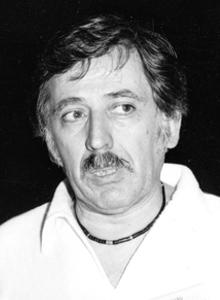
Dick Giordano
1932–2010
Dick Giordano was an American comic book artist and editor renowned for his work at both Charlton and DC Comics. He is credited with helping to introduce Charlton’s “Action Heroes,” and at DC, he served as executive editor and helped shape the look of titles such as Watchmen and The Dark Knight Returns. Giordano was also an inker, a penciler, and a co-founder with Neal Adams of the advertising art company Continuity Associates.
Inducted 2010

Jean “Moebius” Giraud
1938–2012
Jean Giraud first came to the attention of Americans as the artist on the western graphic novel series Lt. Blueberry. In 1975, he founded Metal Hurlant (which became Heavy Metal in the U.S.). His signature art style on such SF/fantasy series as Airtight Garage and Arzach (which he created under the name Moebius), has been highly influential on a wide variety of artists.
Inducted 1998
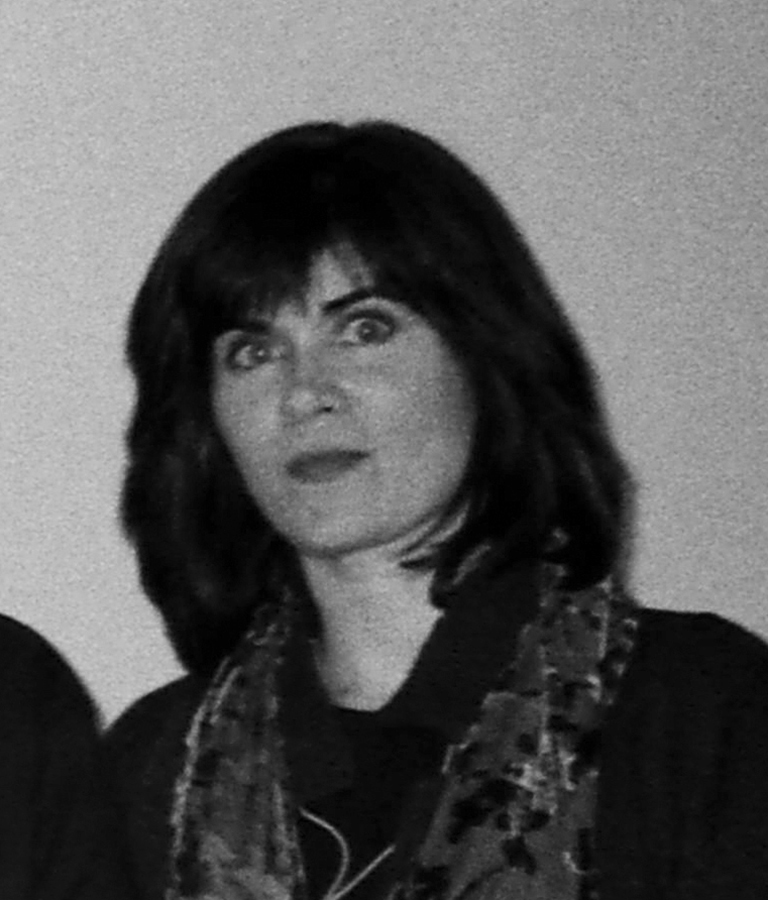
Phoebe Gloeckner
1960–
Phoebe Gloeckner’s first comics work appeared in underground comix publications when she was in her teens. She continued to do stories for such titles as Weirdo, Young Lust, Buzzard, Wimmen’s Comix, and Twisted Sisters. In 1998 her quasi-autobiographical strips were collected in A Child’s Life, and her shattering The Diary of a Teenage Girl (2002) was later made into a film.
Inducted 2025
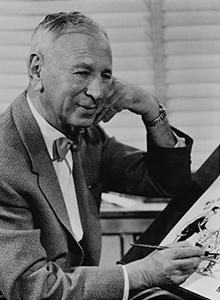
Rube Goldberg
1882–1970
Reuben “Rube” Goldberg was a cartoonist best known for his creation of the “Rube Goldberg machine,” a contraption that performs a simple action in a convoluted way. Golberg drew a number of syndicated strips, including Mike and Ike (They Look Alike), Boob McNutt, Foolish Questions, and The Weekly Meeting of the Tuesday Women’s Club. The cartoons that brought him lasting fame involved a character named Professor Lucifer Gorgonzola Butts. In that series, Goldberg drew labeled schematics of the comical “inventions” that would later bear his name. Goldberg was a founding member and the first president of the National Cartoonists Society and is the namesake of the Reuben Awards, which the NCS gives to the Cartoonist of the Year.
Inducted 2016
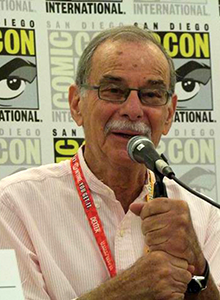
Stan Goldberg
1932–2014
Stan Goldberg started his career in 1949 at the age of 16 as a staff artist for Timely (now Marvel), where he was in charge of the color department. Goldberg continued to color Marvel comics until 1969, creating the color designs for many Silver Age characters, including Spider-Man, The Fantastic Four, and The Hulk. He also drew such Marvel titles as Millie the Model and Patsy Walker. After leaving Marvel he drew some of DC’s teen titles, including Date with Debbie, Swing with Scooter, and Binky, and began a 40-year career at Archie Comics, with his work appearing in such titles as Archie and Me, Betty and Me, Everything’s Archie, Life with Archie, Archie’s Pals n Gals, Laugh, Pep, and Sabrina The Teenage Witch. From 1975 to 1980 Goldberg drew the Archie Sunday newspaper strip.
Inducted 2021
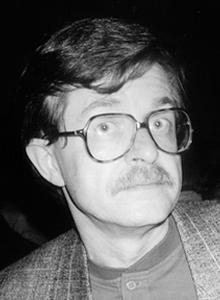
Archie Goodwin
1937–1998
Archie Goodwin is considered by all to have been the “editor’s editor.” He left his mark first as editor (and chief writer) of Creepy and Eerie for Warren in the 1960s, then went on to edit the Epic line of creator-owned projects at Marvel. He then moved on to DC, where he served as editor of a variety of Batman titles until his death in 1998.
Inducted 1998
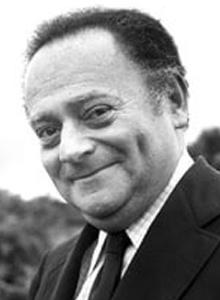
René Goscinny
1926–1977
One of the most famous of all European comics writers, René Goscinny began his career as the scriptwriter for the popular western strip Lucky Luke. In 1959 he co-founded the influential comics weekly Pilote, for which he and artist Albert Uderzo created a new series, Asterix the Gaul. This strip became wildly successful in France and achieved popularity around the world.
Inducted 2005
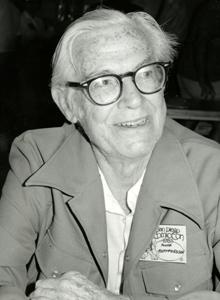
Floyd Gottfredson
1905–1986
If Carl Barks was Disney’s “Duck Man,” Floyd Gottfredson was Disney’s “Mouse Man.” Floyd began writing and drawing the Mickey Mouse newspaper strip in 1930, with his classic period going up through 1955. He continued to work on the strip until 1975.
Inducted 2006
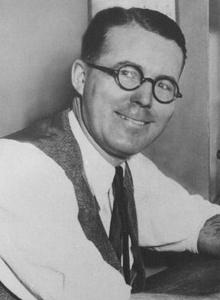
Chester Gould
1900–1985
Chester Gould is the cartoonist who brought us Dick Tracy, Tess Truehart, Junior, Moon Maid, and the most bizarre set of villains ever to grace a newspaper page, including Flattop, Mumbles, and The Mole. Gould not only produced gritty crime stories on a daily basis, but delighted readers with such scientific innovations as the two-way wrist radio.
Inducted 2001
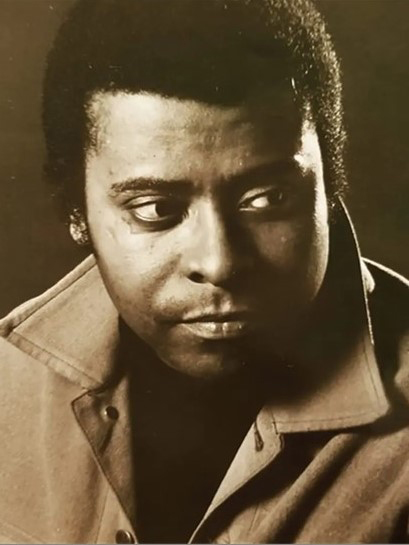
Billy Graham
1935–1997
Billy Graham was an African American comic book artist whose earliest work appeared in Warren’s Vampirella magazine in 1969. He eventually became art director at Warren, then in 1972 he moved over to Marvel, where he helped create Luke Cage, Hero for Hire with John Romita Sr. and George Tuska. From 1973 to 1976, he worked with writer Don McGregor on “Black Panther” in Jungle Action. During the 1980s, he worked with McGregor on the Sabre title at Eclipse Comics.
Inducted 2024
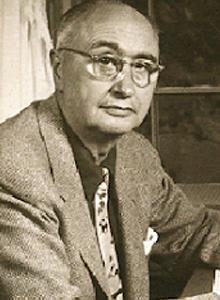
Harold Gray
1894–1968
Harold Gray created Little Orphan Annie in 1924 and continued to write and draw the strip for 44 years. In addition to spawning popular songs and catchphrases (“Leaping Lizards!”) and a hit Broadway musical, one of the innovations of the popular strip was that it was told in “real time”: the events in the strip unfolded one day at a time.
Inducted 2009

Justin Green
1945–2022
Justin Green is most noted for the 1972 underground title Binky Brown Meets the Holy Virgin Mary. This autobiographical comic book detailed Green’s struggle with a form of OCD known as scrupulosity, within the framework of growing up Catholic in 1950s Chicago. Intense graphic depiction of personal torment had never appeared in comic book form before, and it had a profound effect on other cartoonists and the future direction of comics as literature. The underground comix pioneer was also a contributor to such titles as Bijou Funnies, Insect Fear, Arcade, Young Lust, and Sniffy Comics. In the 1990s, Green focused his cartooning attention on a series of visual biographies of musicians for Pulse!, the in-house magazine for Tower Records. These ran for ten years and were later collected as Musical Legends.
Inducted 2023
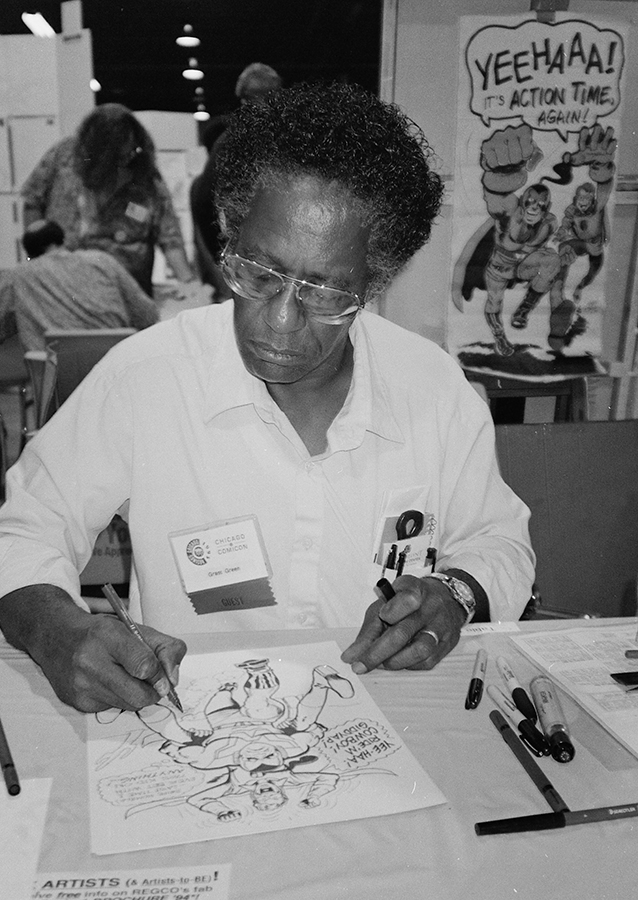
Richard Edward “Grass” Green
1939–2002
Grass Green was an American underground comix artist and part of the pioneer generation of the 1960s. He’s best known for creating superhero parodies like Xal-Kor the Human Cat (1964) and Wildman and Rubberroy (1969), as well as erotic stories for underground comix and the Eros Comix line by Fantagraphics. Green holds historical significance for being the first black underground comix artist. He also created REGCo, which offered comics artists pages where the layout, borders, and panels were already put on paper beforehand.
Inducted 2025

Bill Griffith
1944–
Known for his non sequitur–spouting character Zippy the Pinhead, Griffith had his first work published in 1969 in the East Village Other and Screw. His first major comic book titles included Tales of Toad and Young Lust, a bestselling series parodying romance comics. He was co-editor of Arcade, The Comics Revue for its seven-issue run in the mid-’70s. The first Zippy strip appeared in Real Pulp #1 (Print Mint) in 1970. The strip went weekly in 1976, first in the Berkeley Barb and then syndicated nationally. Today the daily Zippy appears in over 200 newspapers worldwide. Most recently, he produced the graphic novel Three Rocks: The Story of Ernie Bushmiller: The Man Who Created Nancy (Abrams ComicArts).
Inducted 2023
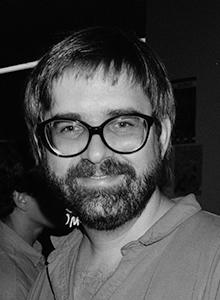
Matt Groening
1954–
Matt Groening, creator and executive producer of The Simpsons, the longest running primetime animated series in television history, started out as a cartoonist, producing the syndicated weekly strip Life in Hell beginning in 1978; he continued the strip until 2012. In 1985 he was asked to come up with an animated short to be part of Fox’s Tracey Ullman Show; the rest is history. Groening’s other award-winning animated series, Futurama, launched 1999 and ran for five seasons. In 1993, he formed Bongo Comics Group, where he serves as publisher of Simpsons Comics, Futurama Comics, and dozens of other titles.
Inducted 2016
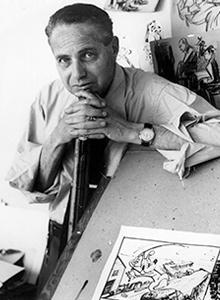
Milt Gross
1895–1953
Milton Gross began his cartooning career in 1915, producing a number of humorous newspaper strips. After serving in World War I, he went on to create strips like Frenchy, Banana Oil, and Help Wanted. His big break came with Gross Exaggerations, a weekly column of prose and cartoons. In 1926 Nize Baby, a book collection of some of these columns, appeared and was an instant hit. Under the same title, Gross began a Sunday page feature in 1927. Other books by Gross include Hiawatta, Dunt Esk, and the pioneer wordless graphic novel He Done Her Wrong. In 1933 Gross was hired by newspaper tycoon William Randolph Hearst, for whom he produced such strips as Count Screwloose of Tooloose, Dave’s Delicatessen, Otto and Blotto, and That’s My Pop!
Inducted 2017
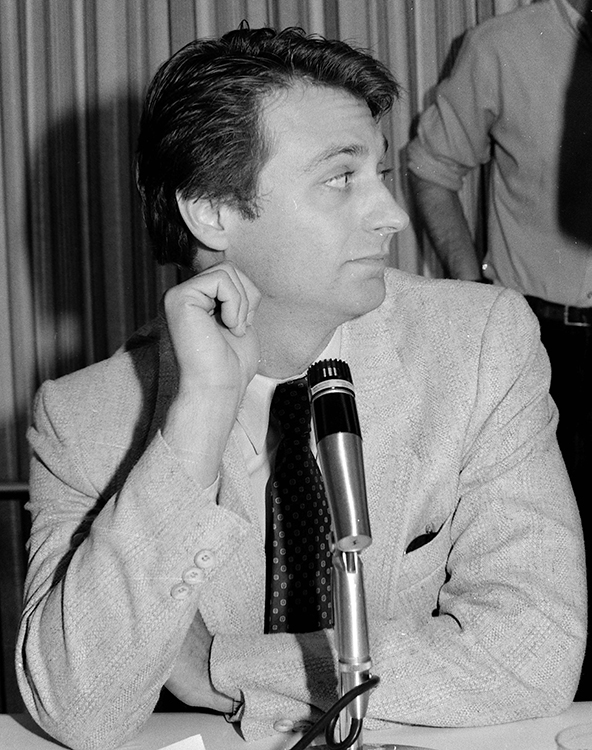
Gary Groth
1954–
Gary Groth co-founded Fantagraphics Books in 1976 with the publication of The Comics Journal, and he was the driving force behind the magazine’s advocacy of comics as an artform. TCJ became known, loved, and hated for its advocacy journalism, high-falutin’ criticism, and long-form interviews by Groth of a vast array of artists from Jack Kirby to R. Crumb to Roz Chast. At a time when comics were an object of scorn in mainstream culture, Fantagraphics was preserving and contextualizing the work of historically and aesthetically significant classic cartoonists—republishing George Herriman’s Krazy Kat, Charles Schulz’s Peanuts, Walt Kelly’s Pogo, and Carl Barks’ Disney Duck stories—as well as publishing the early work of “literary” cartoonists as diverse as the Hernandez Brothers, Daniel Clowes, Aline Kominsky-Crumb, Jim Woodring, Carol Lay, and Joe Sacco. Groth continues to publish a new generation of auteurist cartoonists.
Inducted 2024
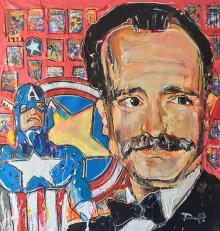
Mark Gruenwald
1953–1996
Mark Gruenwald was hired by Marvel Comics in 1978 and stayed there until his death. During his tenure, he worked on a variety of books before becoming their executive editor and keeper of continuity for much of the 1980s. Gruenwald is most recognized for his work on a new team of heroes known as the Squadron Supreme. The Squadron’s characters had been around, but Gruenwald decided to focus on a new set of the heroes in an alternate reality. The Squadron Supreme received a 12-issue miniseries and is considered a precursor to highly popular deconstructionist superhero parables like Watchmen, Kingdom Come, and The Boys. Sadly, Gruenwald died of heart failure in 1996. He had long told his wife he wanted his ashes to be a part of his work. When Squadron Supreme was collected into a trade paperback, his ashes were mixed into the ink.
Inducted 2022

Moto Hagio
1949–
Moto Hagio is one of a group of women who broke into the male-dominated Japanese manga industry and pioneered the shōjo (girls’ comics) movement in the early 1970s. Hagio’s 1974 work Heart of Thomas was one of the early entries in the shōnen-ai (boys in love) subgenre. Hagio’s linework and dramatic imagery have influenced many manga artists, and she helped shape the style of emotional and symbolic backgrounds that many manga artists draw today. Her major works include A Drunken Dream, They Were Eleven, and Otherworld Barbara.
Inducted 2022
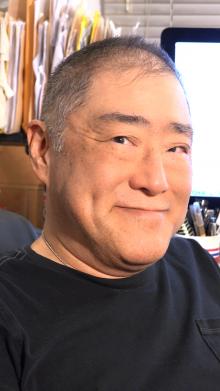
Larry Hama
1962–
Larry Hama is best known as the writer of Marvel’s G.I. Joe: A Real American Hero, G.I. Joe: Special Missions, and Wolverine comics in the ’80s and ’90s. He has also written, edited, or drawn for Avengers, Conan, Batman, Wonder Woman, X-Men, Spider-Man, and dozens more. His illustrations and cartoons have appeared in National Lampoon, Esquire, New York, and Rolling Stone. His most recent novel is The Death of Captain America. He also scripted Batman Shadow of the Bat and Wonder Woman for DC Comics’ Convergence Event, as well as Call of Duty: Black Ops III for Dark Horse and G.I. Joe: A Real American Hero for IDW.
Inducted 2022
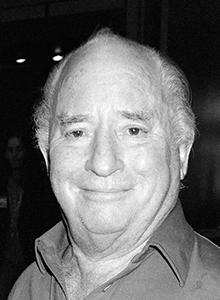
Irwin Hasen
1918–2015
Irwin Hasen started in comic books in 1940, working on such features as The Green Hornet, The Fox, Secret Agent Z-2, Bob Preston, Cat-Man and The Flash, through the Harry “A” Chesler shop. He went on to draw several Green Lantern issues for DC and to co-create the character of Wildcat with Bill Finger. After serving in the military in WWII, Hasen returned to DC, where he drew Johnny Thunder, Justice League of America, Wonder Woman, The Flash, and and Green Lantern, among others. He and writer Gus Edson collaborated on the Dondi newspaper strip from 1955 to 1986.
Inducted 2014
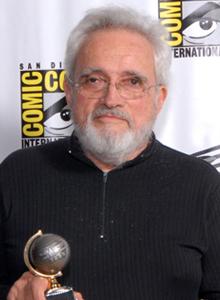
Russ Heath
1926–2018
Russ Heath joined Timely (Marvel) in 1946, where he drew westerns that stood out for their realistic artwork and details. He also drew science fiction stories for Avon, romance stories for Lev Gleason, and Plastic Man for Quality. In the 1950s at DC/National he drew such features as “Golden Gladiator” and “Robin Hood” in Brave and the Bold. But his most highly lauded work was for war titles, including Sea Devils, Our Army at War (“Sgt. Rock”), and G.I. Combat (“The Haunted Tank”).
Inducted 2004
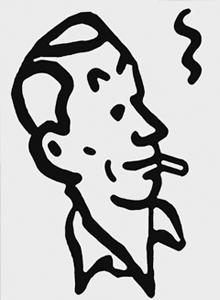
(Georges Remi) Hergé
1907–2007
Belgian cartoonist Georges Remi, known by his pen name Hergé,
created Tintin in 1929 as a comic strip for a weekly newspaper supplement. The adventure series became hugely popular in Europe, and since then 22 Tintin books have been published worldwide. Hergé’s clean style has influenced hundreds of other cartoonists.
Inducted 2003
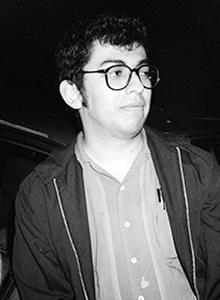
Jaime Hernandez
1959–
Jaime Hernandez, along with his brothers Gilbert and Mario, self-published the first issue of Love and Rockets in 1981. It was picked up by Fantagraphics Books in 1982 and ran 50 issues before the brothers took a break to pursue solo projects. Jaime’s L&R titles include Vida Loca: The Death of Speedy Ortiz, Whoa, Nellie!, Maggie and Hopey Color Fun, Penny Century, and The Love Bunglers. Love and Rockets was revived in 2000 and still continues today.
Inducted 2017
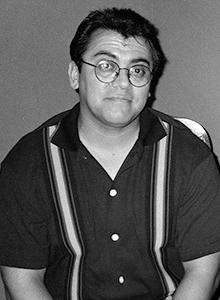
Gilbert Hernandez
1957–
Gilbert Hernandez, along with his brothers Jaime and Mario, self-published the first issue of Love and Rockets in 1981. It was picked up by Fantagraphics Books in 1982 and ran 50 issues before the brothers took a break to pursue solo projects. From 1983 to 1996, Gilbert produced the legendary Palomar saga, collected in such graphic novels as Heartbreak Soup and Human Diastrophism. Gilbert’s other works include Marble Season, Birdland, and Girl Crazy. Love and Rockets was revived in 2000 and still continues today.
Inducted 2017
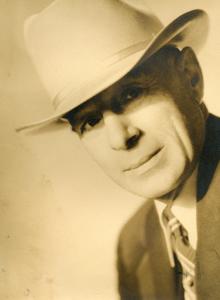
George Herriman
1880–1944
The bizarre triangle of Ignatz Mouse, Krazy Kat, and Offisa Pup sprang from the fertile mind of cartoonist George Herriman, whose imaginative use of the comics page and unique setting have captivated readers for over a century. Because of Herriman, a brick isn’t just a brick.
Inducted 2000
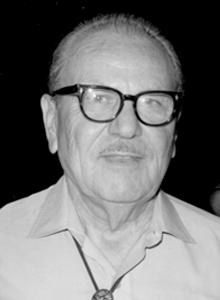
Burne Hogarth
1911–1996
Artist and educator Burne Hogarth is best known for his beautiful Tarzan Sunday newspaper pages from 1937 to 1950. In 1950 he abandoned his own comics production to devote all his time to teaching at the Cartoonists and Illustrators School (later the School of Visual Arts), which he had founded with Silas Rhodes back in 1947. Hogarth taught at this school until 1970 and also authored a series of books on drawing and anatomy.
Inducted 2010
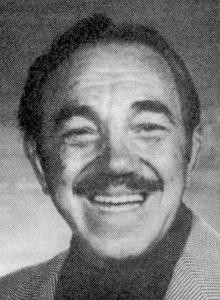
Jerry Iger
1903–1990
Jerry Iger was one of the first people involved in the comic book business, founding his own Phoenix Features Syndicate. His strips published in Famous Funnies are among the first ever produced especially for comic books. With Will Eisner, he formed the S. M. Iger Studios in 1937, which eventually became known as the Eisner-Iger Shop. Among their productions were Jumbo, Jungle, Planet, and Wings for Fiction House. When Eisner left in 1939, the studio continued as the Iger Shop, which produced titles for such companies as Fox, Quality, and Harvey up until 1955.
Inducted 2009
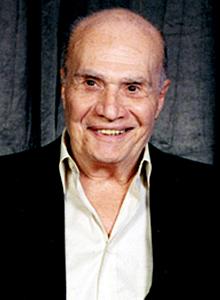
Carmine Infantino
1925–2013
Carmine Infantino‘s art established a distinctive look to DC’s science fiction comics in the late 1950s and early 1960s. His work on the relaunched Silver Age Flash is prized by collectors. In the mid-1960s he became DC’s art director and proceeded to use such artists as Joe Kubert, Joe Orlando, and Dick Giordano as editors. He moved on to become DC’s editorial director, publisher, and president; he left DC in 1975.
Inducted 2000
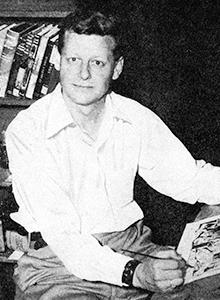
Graham Ingels
1915–1991
Graham Ingels is best known for his stories and covers for EC Comics’ horror line: The Haunt of Fear, Tales from the Crypt, and The Vault of Horror. Ingels was one of the first artists to come to work for EC after Bill Gaines took over the company in 1948. As “Ghastly” Graham Ingels, he became the company’s premiere horror artist.
Inducted 2009
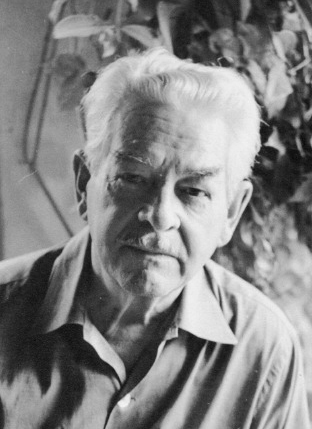
Rea Irvin
1888 –1972
Rea Irvin was The New Yorker’s first art editor, but that title barely begins to suggest his importance to the magazine. Not only did he draw Eustace Tilley (the magazine’s mascot) for the first cover, he also designed virtually the entire look of the magazine. He was instrumental in inventing the one-line gag cartoon, The New Yorker’s signature contribution to comic art.
Inducted 2025
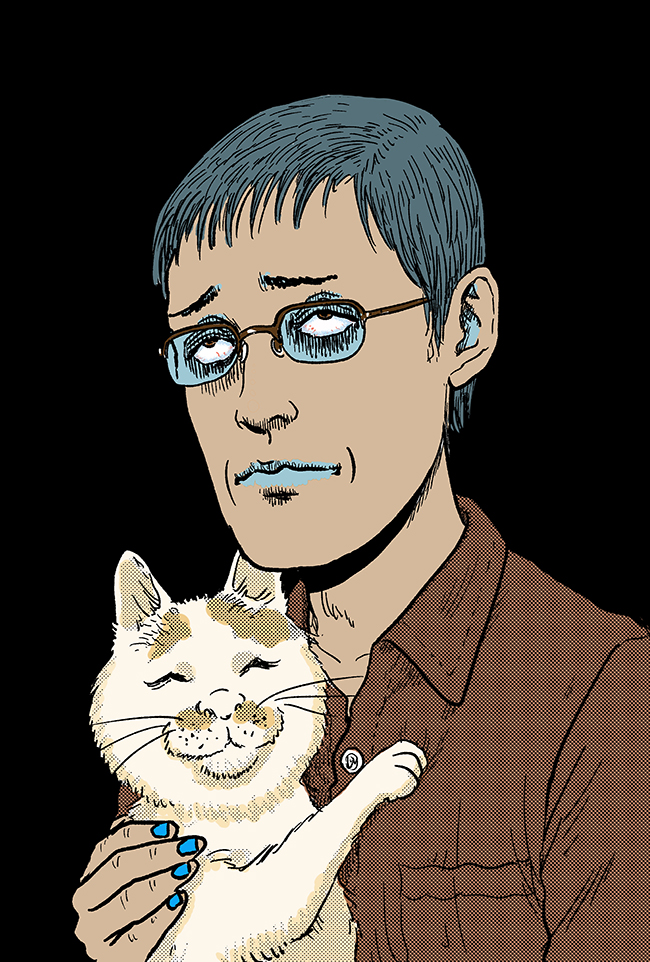
Junji Ito
1963–
Junji Ito is a Japanese cartoonist and illustrator best known for his horror manga. His notable series include Tomie (1987–2000), about a beautiful high school girl who inspires her admirers to commit atrocities; Uzumaki (1998–1999), set in a town cursed with spiral patterns; Gyo (2001–2002), featuring a horde of metal-legged undead fish; and Remina (2005), about a giant planet-consuming creature from another dimension. He has been nominated for multiple Eisner Awards and is the winner of four, including two in 2022 for Lovesickness.
Inducted 2025
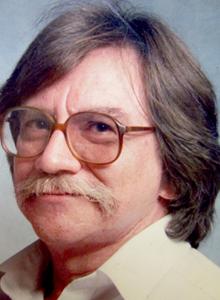
Jack Jackson
1941–2006
Jack Jackson, aka “Jaxon,” created, wrote, drew, and self-published what comics historians consider one of the first underground comix, God Nose. He was art director at Family Dog and a co-founder of Rip-Off Press. He contributed to such underground anthology titles as Skull, Slow Death, and Tales of the Leather Nun. Jaxon went on to pioneer historical graphic novels with the innovative Comanche Moon series for Last Gasp. He continued chronicling his home state’s history via El Alamo, Los Tejanos, and Lost Cause.
Inducted 2011
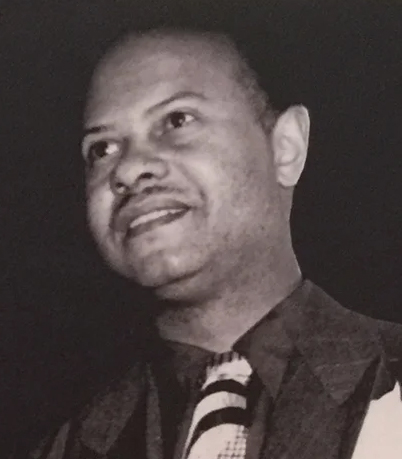
Jay Jackson
1905–1954
Jay Paul Jackson was an African American artist who spent many years working for the Chicago Defender, in addition to providing illustrations for science fiction magazines such as Amazing Stories and Fantastic Adventures. Jackson introduced the world to the first black superhero on January 6, 1945 in the “the oldest, longest continuously running black comic strip,” Bungleton Green, in the Chicago Defender. Bungleton Green, the name of the character as well as the strip, became the literal embodiment of the black ideal, a man who in all ways was equal, even superior, to the whites whose relentless oppression Jackson constantly fought.
Inducted 2023
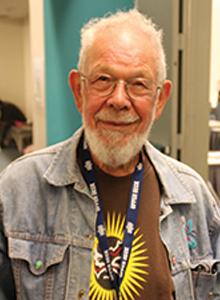
Al Jaffee
1921–2023
Al Jaffee is best known as the creator of MAD magazine’s fold-ins, which he produced from 1964 until 2019, and for “Snappy Answers to Stupid Questions,” a feature that has been collected into over a dozen books. Earlier in his career, Al worked for Stan Lee at Timely, where he was in charge of all humor and teen titles as associate editor. He also worked with Harvey Kurtzman on the short-lived Trump and Humbug humor magazines.
Inducted 2013
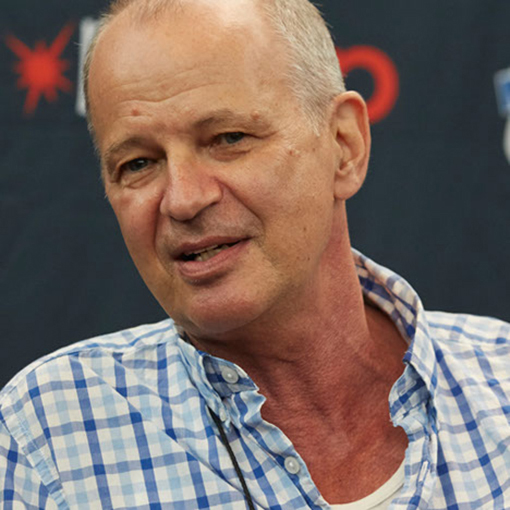
Klaus Janson
1952–
Penciler, inker, colorist, and educator Klaus Janson is known for work for Marvel and DC on such comics as Daredevil, Dark Knight Returns, and Defenders. Janson made his professional debut for Marvel in 1973, inking Rich Buckler’s pencils for the “The Black Panther” in Jungle Action. He inked such diverse Marvel titles as Defenders, Deathlok, Battlestar Galactica, and Howard the Duck, although his main series was Daredevil. He inked for Gene Colan, Gil Kane, Carmine Infantino, and Frank Miller. Later, Janson focused on penciling and inking, rather than inking alone. With Miller, Janson worked on the The Dark Knight Returns miniseries. He also worked on The Punisher and Spawn. He received an Inkpot Award in 2012.
Inducted 2024
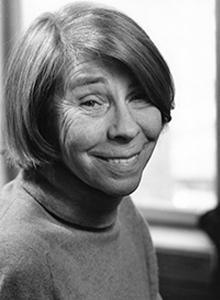
Tove Jansson
1914–2001
Tove Jansson began her work as a political cartoonist and illustrator in the Garm magazine in the 1930s; through these strips, Moomin was born. Her first book was published in 1945, featuring her loveable hippopotamus-like characters, The Moomins and the Great Flood. She went on to write several more Moomin books as well as her equally popular children’s books. She produced her magnum opus that consisted of 21 long Moomin stories that were broken up as four panel strips from 1954 to1959. Jansson’s work has been translated into 33 languages and they are the most widely translated works of Finnish literature. Not only does she have an amusement park based on her Moomin world but the Finnish put her likeness on a coin.
Inducted 2016

Jeffrey Catherine Jones
1944–2011
Jeff Jones began creating comics in 1964. While attending Georgia State College, Jones met fellow student Mary Louise Alexander, whom he married in 1966. After graduation, the couple moved to New York City but split up in the early 1970s (writer/editor Louise Jones Simonson was inducted into the Eisner Hall of Fame in 2020). In New York Jones found work drawing for King Comics, Gold Key, Creepy, Eerie, and Vampirella, as well as Wally Wood’s Witzend. In the early 1970s when National Lampoon began publication, Jones had a strip in it called Idyl. From 1975 to 1979 Jones shared workspace with Bernie Wrightson, Barry Windsor-Smith, and Michael Wm Kaluta, collectively named The Studio. By the early 1980s Jones had a recurring strip in Heavy Metal titled I’m Age. In the late 1990s, Jones started taking female hormones and had sex reassignment surgery. She passed away in May of 2011.
Inducted 2023
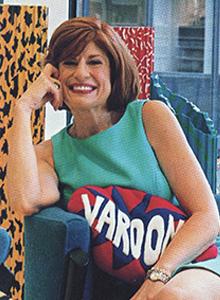
Jenette Kahn
1947–
Jenette Kahn rebranded National Periodical Publications as DC Comics, reviving the floundering company as a proving ground for both experimental titles and reboots of iconic characters. She started as publisher at DC in 1976, at only 28 years old, after having founded the wildly successful kids magazine Dynamite for Scholastic. Kahn became president of DC in 1981 and editor-in-chief in 1989. She pushed the boundaries of mainstream comics, publishing work such as Watchmen and The Dark Knight Returns, and launched the edgier Vertigo line in 1993. She grew the company from 35 employees to 200 (half of them women) and instituted more creator-friendly policies. In 2000 the Library of Congress honored Kahn as a Living Legend for her contributions to America’s cultural heritage. In 2002 she left DC to create her own film production company, Double Nickel, which produced Clint Eastwood’s Gran Torino in 2008.
Inducted 2019
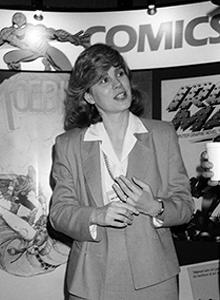
Carol Kalish
1955–1991
Carol Kalish served as direct sales manager and vice president of new product development at Marvel Comics from 1981 to 1991. She is credited with pioneering the comics direct market when it was in its adolescence, in part through a program in which Marvel helped pay for comic book stores to acquire cash registers. Beginning in the mid-1980s, Kalish spearheaded the expansion of Marvel’s distribution into previously unexplored retail outlets, including major bookstores such as B. Daltons and Waldenbooks. In 2010 she was posthumously awarded the first ComicsPRO Industry Appreciation Award.
Inducted 2018
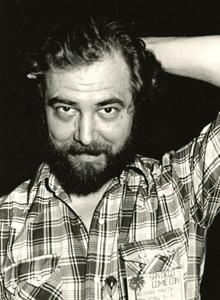
Michael Kaluta
1947–
Artist and illustrator Michael Kaluta is best known for his work on The Shadow and Elaine Lee’s Starstruck and for his cover art. Influenced by art nouveau and the 1930s pulps, he brought a unique look to comics in the 1970s and 1980s. In recent years he has been in demand as a cover artist, including an award-nominated run on DC/Vertigo’s Madame Xanadu.
Inducted 2010
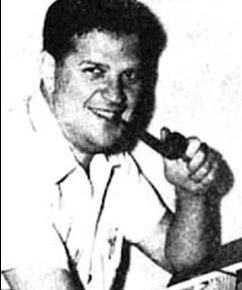
Jack Kamen
1920–2008
Jack Kamen was one of the most prolific and influential artists for EC Comics, drawing crime, horror, humor, suspense, and science fiction stories. After EC, he drew Sunday supplement illustrations and created advertising art for a wide variety of clients. He also drew all the comic book artwork for Stephen King and George Romero’s 1982 horror anthology film Creepshow, their homage to the EC horror comics.
Inducted 2025
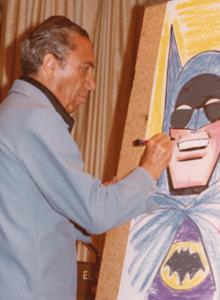
Bob Kane
1915–1998
Bob Kane entered the comic book industry in 1936 as a freelancer for Jerry Iger’s Wow! What a Magazine! At the Eisner-Iger studio, he drew funny animal strips and humor features. His first adventure strip was “Rusty and His Pals” for DC’s Adventure Comics. In 1939 he collaborated with writer Bill Finger to create a new strip for Detective Comics: “The Bat-Man.” The rest is history!
Inducted 1998
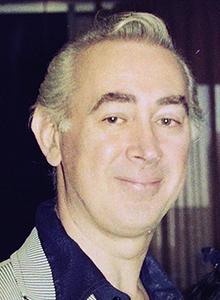
Gil Kane
1926–2000
As a penciller, Gil Kane lent his distinctive style to numerous DC and Marvel titles beginning in the 1950s, including drawing more than 900 covers for Marvel starting in the late 1960s. His work at DC on such titles as Green Lantern and The Atom is highly revered by fans, as is his work at Marvel on Amazing Spider-Man, and many other titles. In the 1970s, he was Marvel’s main cover artist.
Inducted 1997
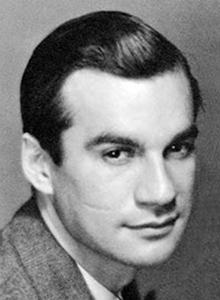
Robert Kanigher
1915–2002
In the mid-1940s Robert Kanigher wrote the Justice Society of America, Hawkman, Green Lantern, and Wonder Woman (which he also edited). In 1952 he took over writing and editing the Big Five DC war titles and created Sgt. Rock, Enemy Ace, and The Unknown Soldier (all with Joe Kubert) and The Haunted Tank (with Russ Heath). In the late 1950s and early 1960s he was involved in creating such characters as Viking Prince, the Metal Men, and Poison Ivy. He also scripted the first appearance of the Flash in Showcase #4, the comic often credited as launching the Silver Age of Comics.
Inducted 2007

Jack Katz
1927–2025
Jack Katz began his career at the age of 16, doing art for Archie Comics and Fawcett’s Bulletman, and he worked as an assistant on several strips for King Features in the second half of the 1940s. In the early 1950s, he went to work as a comic book penciler for Marvel/Atlas Comics and continued into the early 1970s. He did art on many war, mystery, and romance titles, mainly for Marvel but also for Better Publications. Katz was additionally present in DC’s romance titles and in the horror magazines of Warren Publishing and Skywald in the 1970s. Then he dropped out of mainstream comics to devote 12 years to his First Kingdom project: a complex science fiction epic that tells of man’s migration into space, the ensuing galactic battles, and the great mystery of mankind’s origin before the fall of civilization. Katz completed this series with issue #24 in 1986.
Inducted 2023
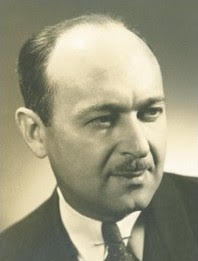
Albert Kanter
1897–1973
Albert Lewis Kanter began producing Classic Comics for Elliot Publishing Company (later the Gilberton Company) with The Three Musketeers in October 1941. Classic Comics became Classics Illustrated in 1947. Kanter believed he could use the burgeoning medium to introduce young and reluctant readers to “great literature.” In addition to Classics Illustrated, Kanter presided over its spin-offs Classics Illustrated Junior, Specials, and The World Around Us. Between 1941 and 1962, sales totaled 200 million.
Inducted 2024
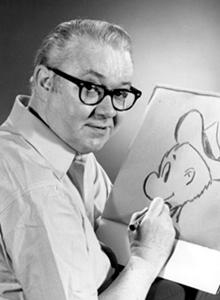
Walt Kelly
1913–1973
Walt Kelly created the denizens of the Okeefenokee swamp, including Pogo Possum, Albert the Alligator, Miz Mamselle Hepzibah, and Porkypine. His Pogo was one of the great sophisticated comics strips, imbued with great humor, sublime satire, and transcendental cartooning.
Inducted 1995
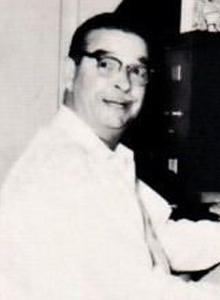
Frank King
1883–1969
With Gasoline Alley, Frank King created a neighborhood full of interesting characters who did something no other comics characters did: they aged. He was also a master of the Sunday newspaper page, utilizing it to its full potential by often creating a full-page image and dividing it into panels.
Inducted 2001
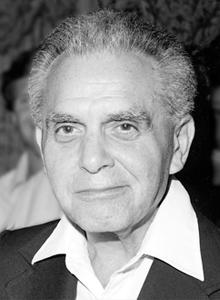
Jack Kirby
1917–1974
The “King” of the comic book artists, Jack Kirby was there from the beginning, co-creating Captain America in the Golden Age, whole genres such as romance comics in the 1940s, and the “Marvel Age of Comics” in the 1960s. He gave the distinctive look to such characters as the Fantastic Four, Thor, the Silver Surfer, the Avengers, and hundreds of other characters. In the 1970s he created the “Fourth World” for DC, giving birth to such characters as Darkseid, the Demon, and Mr. Miracle.
Inducted 1987
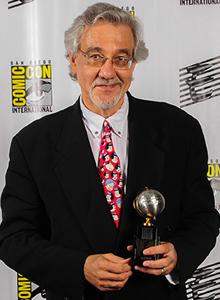
Denis Kitchen
1947–
Denis Kitchen started out as an underground cartoonist. After self-publishing his own work in 1969, he founded Kitchen Sink Press in 1970. Under the name of the Krupp Syndicate, he distributed comic strips to almost 50 underground and college newspapers. Over the course of the next few decades Kitchen Sink published such cartoonists as R. Crumb, Art Spiegelman, S. Clay Wilson, Howard Cruse, Harvey Kurtzman, Will Eisner, Al Capp, Alan Moore, Neil Gaiman, Scott McCloud, and dozens more. In 1986 Denis founded the Comic Book Legal Defense Fund, and he served as the fund’s president until his retirement in 2004.
Inducted 2015
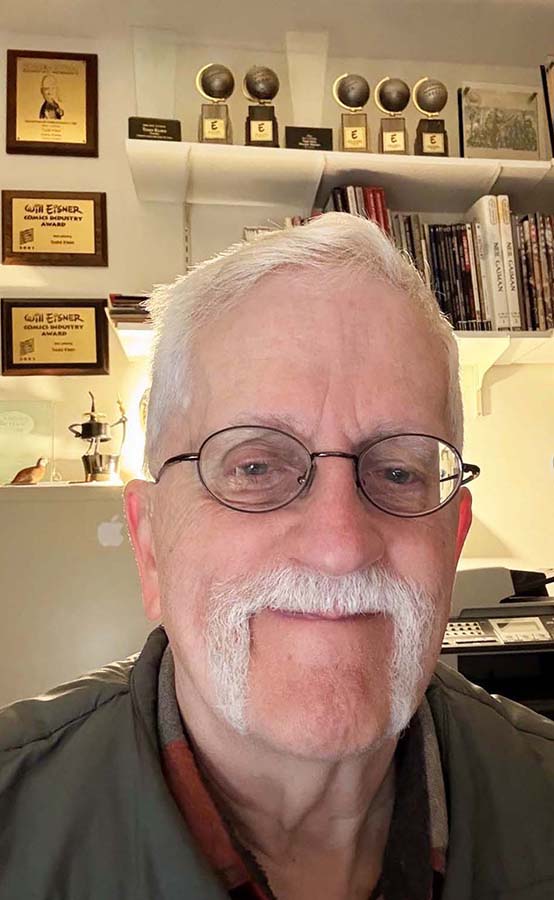
Todd Klein
1951–
Todd Klein has been one of comics’ premier letterers ever since he was hired by DC in 1977. He worked on staff until 1987, leaving to freelance for other companies as well as DC. Over his career he has lettered many hundreds of comics projects and designed numerous logos, garnering him 18 Best Letterer/Lettering Eisner Awards since the category was established in 1993. He co-wrote The DC Comics Guide to Coloring and Lettering Comics, published in 2004.
Inducted 2025
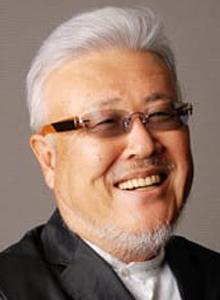
Kazuo Koike
1931–2019
Kazuo Koike was the co-creator and writer of such classic Japanese comics series as Lone Wolf and Cub, Samurai Executioner, and Crying Freeman. He was also an influential educator, having established the Gekikia Sonjuka, a college course that teaches manga, and mentoring a whole new generation of mangaka (comics artists).
Inducted 2004
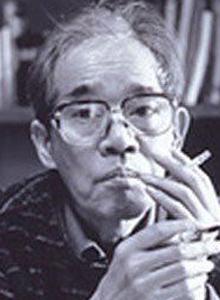
Goseki Kojima
1928–2000
Goseki Kojima was the co-creator and writer of the classic Japanese manga series Lone Wolf and Cub and Samurai Executioner. He also produced a number of graphic novels based on Akira Kurosawa’s films.
Inducted 2004

Aline Kominsky-Crumb
1948–2022
Born Aline Goldsmith in 1948, in Long Island, New York, Aline Kominsky moved to San Francisco in 1971 and fell in with the all-female collective that founded Wimmen’s Comix, and she contributed stories to the anthology’s inaugural issues. In 1975, she departed Wimmen’s Comix and with fellow former contributor Diane Noomin launched Twisted Sisters, which would eventually spawn an anthology and a limited series featuring work by many Wimmen’s Comix contributors. Kominisky married Robert Crumb in 1978, a few years after the couple began co-creating the comic Dirty Laundry, about their life together. Aline drew her own character, “the Bunch,” later collected into Love That Bunch. In 1981 she took the editorial reins of Crumb’s Weirdo anthology and remained the series’ editor through its 1993 conclusion. In 1990, the Crumbs moved to a small village in southern France, where they continued to collaborate. Aline’s 2007 memoir, Need More Love, earned her critical acclaim.
Inducted 2023
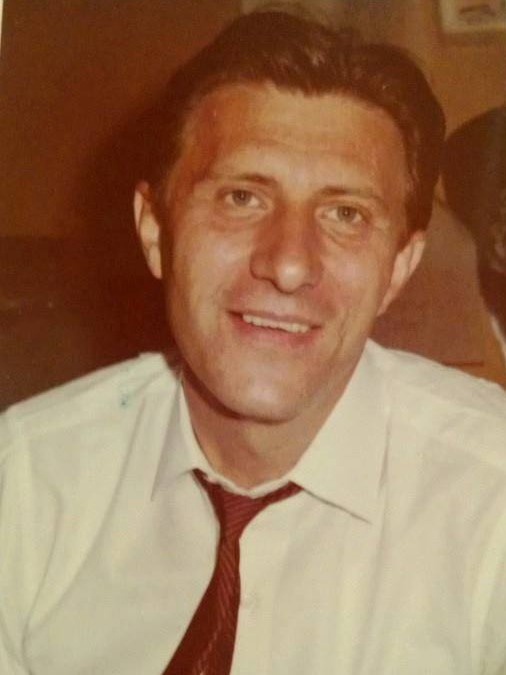
Warren Kremer
1921–2003
Warren Kremer studied at New York’s School of Industrial Arts and went straight into print services, working for pulp magazines. He gradually took on more comics work in Ace Publications, his first title being Hap Hazard. In 1948 Kremer began working for Harvey Comics, where he stayed for 35 years, creating such popular characters as Casper and Richie Rich and working on titles including Little Max, Joe Palooka, Stumbo the Giant, Hot Stuff, and Little Audrey. In the 1980s, Kremer worked for Star Comics, Marvel’s kids imprint, and contributed to titles like Top Dog, Ewoks, Royal Roy, Planet Terry, and Count Duckula.
Inducted 2024
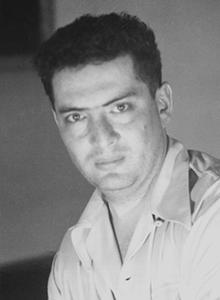
Bernard Krigstein
1919–1990
Although B. Krigstein was not the most prolific artist in the EC Comics stable, he was one of the most influential. His experiments with storytelling and the use of zip-a-tone contributed to his distinctive style. His story “The Master Race” in EC’s Impact #1 is often cited as among the top comics stories ever told. Krigstein went on from comics to become an influential painter.
Inducted 2003
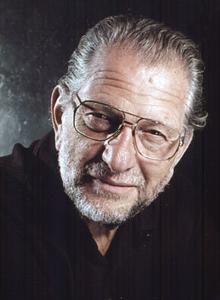
Joe Kubert
1926–2012
Having started in comics as a teenager in Will Eisner’s studio, Joe Kubert was involved professionally in comics as an artist and editor for 70 years. He is best known for his work at DC on Hawkman, Our Army at War, Sgt. Rock, Viking Prince, Enemy Ace, and Tarzan. His 1996 graphic novel Fax from Sarajevo won numerous awards. He is the founder of the Joe Kubert School in New Jersey.
Inducted 1998
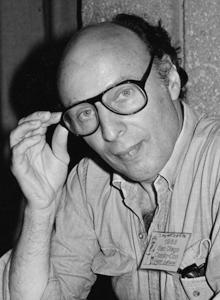
Harvey Kurtzman
1924–1993
Best known for his wild and wacky humor on the early issue of MAD and the other publications he edited (Humbug, Help!) and for his long-running Playboy strip “Little Annie Fanny,” Harvey Kurtzman also made an indelible mark in comics with the war comics he wrote and edited for EC in the early 1950s. Kurtzman was a major influence on a wide range of writers, artists, filmmakers, and particularly underground cartoonists.
Inducted 1989